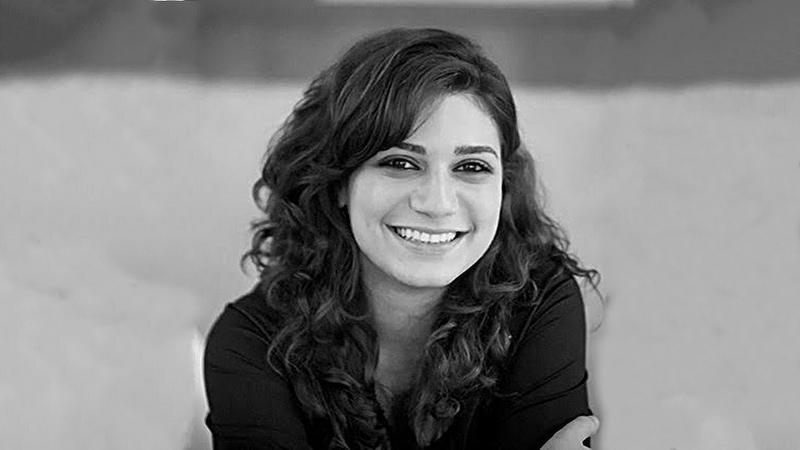By David Murphy, KAUST News
KAUST alumna Joanna Nassar recently won the Best Innovation Award in the Tech for a Better World category at the 2020 Consumer Electronics Show (CES) held in Las Vegas, U.S., from January 7-10. Nassar, a postdoctoral fellow at Stanford University, received the award for her research as part of the KAUST MMH Labs research group’s development of a wearable technology tagging prototype called Bluefin.

Bluefin, co-created by Nassar, her former colleague Sohail Faizan Shaikh, and her former supervisor Muhammad Mustafa Hussain, KAUST professor of electrical engineering, is the first multisensory skin-like, noninvasive, wearable, which can be attached to the exterior of marine wildlife to monitor their movements and gather ecological data for conservation purposes. The device, which weighs just 2.4 grams, can continuously monitor water temperature, salinity, pH, depth levels, and the effects of climate change in the world’s oceans for a year at a time.

Nassar acknowledged that she was particularly humbled to receive the award at an annual event that attracted some of the world's leading consumer technology business leaders and designers. “I feel honored to win such a prestigious award. The CES Best Innovation Award is an encouraging sign that my research is progressing in the right direction.”
“I am also grateful for having such a supportive advisor during my time at KAUST. Without Professor Hussain, I could not have gotten as far in my career. He instilled in me a drive and passion for innovation.”
Helping to manage and protect marine ecosystems
Along with addressing existing cost and weight challenges found in similar tagging systems, the KAUST-developed technology tag fully utilizes its stretchable skin-like design to create a more conformal and reduced drag tool that works without interfering with the animal’s movements.
“We are providing marine scientists around the world with the tool to enable the safe, low-cost, and widespread in situ study of ocean health to support conservation and management of marine ecosystems, which are otherwise not possible with current expensive and limiting marine tags,” Nassar emphasized.
“I am further building on the initial prototype and working with the Hopkins Marine Station at Stanford University to advance the Bluefin’s functionality and reliability,” she added.
A space for fluid research
Nassar is currently working as a postdoctoral fellow in the Stanford University Department of Biology under Professor Barbara Block. After conducting research into flexible and stretchable electronics at Stanford over the past year, the commonalities between her former and existing university are becoming more evident.
“Two years after leaving KAUST, I still benefit from the multidisciplinarity that KAUST brought to my research. After being at two of the top U.S. universities for my postdocs (Caltech and Stanford), I can with no doubt say that I am proud to be a KAUST alumnus. KAUST has truly placed all of its alumni in a position to work at some of the leading universities and industries worldwide.”
Nassar joined KAUST in 2012 to pursue her master’s degree in electrical engineering as a member of Professor Hussain’s MMH Labs research group. “I was intrigued to start my academic journey at KAUST as I was amazed by the technologies and tools that the university provided. It was a real hands-on research environment,” she emphasized.
A team effort
Post her graduation from KAUST in 2016, Nassar’s former colleagues in the KAUST MMH Labs research group have continued to develop and redefine the original Bluefin tag. More specifically, over the past three years, KAUST Ph.D. candidate Sohail Faizan Shaikh has worked tirelessly on improving the Bluefin’s design and functionality. These performance refinements on the original prototype have improved the device’s tolerance for operating at greater depths and improved its flexibility and durability when attached to different types of fish.
The MMH Labs team have also reduced the size of Bluefin by more than half from its original design while enhancing the devices sensing capabilities by up to 15 times.
Shaikh, whose research focuses on the development of 3D heterogeneous integration strategy for fully flexible CMOS electronics, will join the world’s largest semiconductor research consortium, Interuniversity Microelectronics Centre (imec) in Belgium this summer.
Science and art as one
From a young age, Nassar was fascinated by the world around her and how things worked. Having originally trained as a physicist, it was during her bachelor years that she developed, and fully realized, a desire to become an engineer.
“Living in Lebanon, I was astonished by the fact that we still didn’t have 24/7 access to electricity in the 20th century. Science, to me, was fun, but I also had a desire to contribute and build solutions to the problems around me. This desire made me want to learn how to become an engineer.
“I also believe that art and science are one. Thinking of science and technology as a means to create art can unleash a whole new world of possibilities in one’s mind. The more you foster the artistic part of your mind, the more limitless your science can become.”

